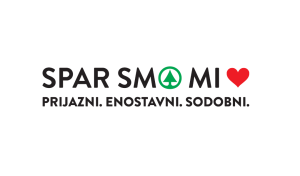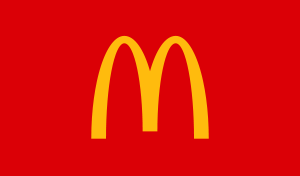Condensed Financials: What They are, How They Work

The bookkeeper affirms the fact that this invoice is to be held for recording in January. Businesses can select the inventory valuation that best suits their operations. However, they cannot frequently change their inventory valuation method to manipulate the income statement in their favor. However, please note that if prices are decreasing, the opposite scenarios outlined above play out. In addition, many companies will state that they use the “lower of cost or market” when valuing inventory.
Maximizing COGS vs Minimizing Taxes
It is the amount by which a company’s taxable income has been deferred by using the LIFO method. To calculate the Cost of Goods Sold (COGS) using the LIFO method, determine the cost of your most recent inventory. The FIFO (“First-In, First-Out”) method means that the cost of a company’s oldest inventory is used in the COGS (Cost of Goods Sold) calculation.
FIFO vs. LIFO: Understanding inventory valuation methods
LIFO (“Last-In, First-Out”) means that the cost of a company’s most recent inventory is used instead. So ultimately, the benefit of using the FIFO method for a company is that it can report a higher value of shareholders’ equity or net worth and hence appear more attractive to the investors. On the other hand, a company that uses the LIFO method will be reporting a lower value of net worth and hence will appear comparatively less attractive to the investors. The inventory value appears on the Income Statement as Cost of Goods Sold (COGS) and on the Balance Sheet as Inventory under Current Assets. It means that whenever the inventory is reported as sold (either after conversion to finished goods or as it is), its cost will equal the cost of the latest inventory added to the stock. In retail, manufacturing and wholesale sales, solid profits result from closely managed inventory.
Instructions
It’s a method of inventory management and valuation in which goods produced or acquired most recently are recorded as sold first. In other words, the cost of the newest products is counted in the COGS, whereas the price of older goods is counted in inventory. Here, we’ll discuss inventory valuation, accounting principles, and how to decide between LIFO vs. FIFO methods based on your business.
Differences Between Condensed and Traditional Income Statements

For the sake of simplicity, you purchase plastic two times a year, once during the beginning months and once during the last months. During the first half of the year, you produce 1000 cups spending 1 dollar per cup. In the second half, you produce another 1000 cups, but the price of plastic has gone up so each cup costs you 2 dollars to make. At year-end, you create your financial statements and you find that you have brought in 4000 dollars in sales for selling 1000 cups at 4 dollars per cup. FIFO or LIFO are the methods companies use to classify inventory and calculate profit.
A condensed income statement does not exist in isolation; it should be integrated with other financial statements to provide a comprehensive view of the company’s financial position. The balance sheet, for instance, complements the income statement by detailing the company’s assets, liabilities, and equity. By analyzing both documents together, stakeholders can assess the company’s liquidity, solvency, and overall financial stability.
Instructions Determine the amount of the ending inventory by applying the… Kari Downs, an auditor with Wheeler CPAs, is performing a review of Depue Company’s inventory account. Depue did not have a good year, and top management is under pressure to… Houghton Limited is trying to determine the value of its ending inventory as of February 28, 109, the company’s year-end.
- Indicate which of these items would typically be reported as inventory in the financial statements.
- The Sterling example computes inventory valuation for a retailer, and this accounting process also applies to manufacturers and wholesalers (distributors).
- For instance, expenses can be delayed or revenue recognised earlier and the appearance of profitability changed.
- In the LIFO method, the most recent purchasing cost is subtracted from its selling price to calculate the reported profit.
- Ensuring uniformity in data collection and presentation is crucial for creating a coherent and reliable statement.
The management of Gresa Inc. is reevaluating the appropriateness of using its present inventory cost flow method, which is average-cost. However, financial statements are of use to us in several respects; however, they are not fully without limitations. Now, let us go through some common constraints and understand how they make an impact on us. A cash flow statement tells us how much cash moves through our business and whether or not we have money for expenses. Next, let’s see the different types of financial statements that make such things possible and what role each type plays in helping us understand, control, and develop our business. Never think business finance is boring, but much as that is true, financial statements aren’t for just us owners or managers.
However, if there are five purchases, the first units sold are at $58.25. Using FIFO simplifies the accounting process because the oldest items in inventory are assumed to be sold first. When Sterling uses FIFO, all of the $50 units are sold first, followed by the items at $54. We’ll calculate the cost of goods sold balance and tax considerations for college students ending inventory, starting with the FIFO method. Let’s assume that a sporting goods store begins the month of April with 50 baseball gloves in inventory and purchases an additional 200 gloves. Goods available for sale totals 250 gloves, and the gloves are either sold (added to cost of goods sold) or remain in ending inventory.
For example, if you sold 15 units, you would multiply that amount by the cost of your oldest inventory. Using the FIFO inventory method, this would give you your Cost of Goods Sold for those 15 units. To calculate FIFO, multiply the amount of units sold by the cost of your oldest inventory.
However, the reduced profit or earnings means the company would benefit from a lower tax liability. If there was no inflation, the order of items sold wouldn’t matter but since realistically the prices tend to go up, using one method over the other affects your income statements and taxes. FIFO, or First In, First Out, is an inventory valuation method that assumes that inventory bought first is disposed of first. Conversely, if inflation is negative, the impact of LIFO and FIFO will be reversed as described above. Another inventory cost accounting method that is also widely used by both public vs. private companies is the Average Cost method.






